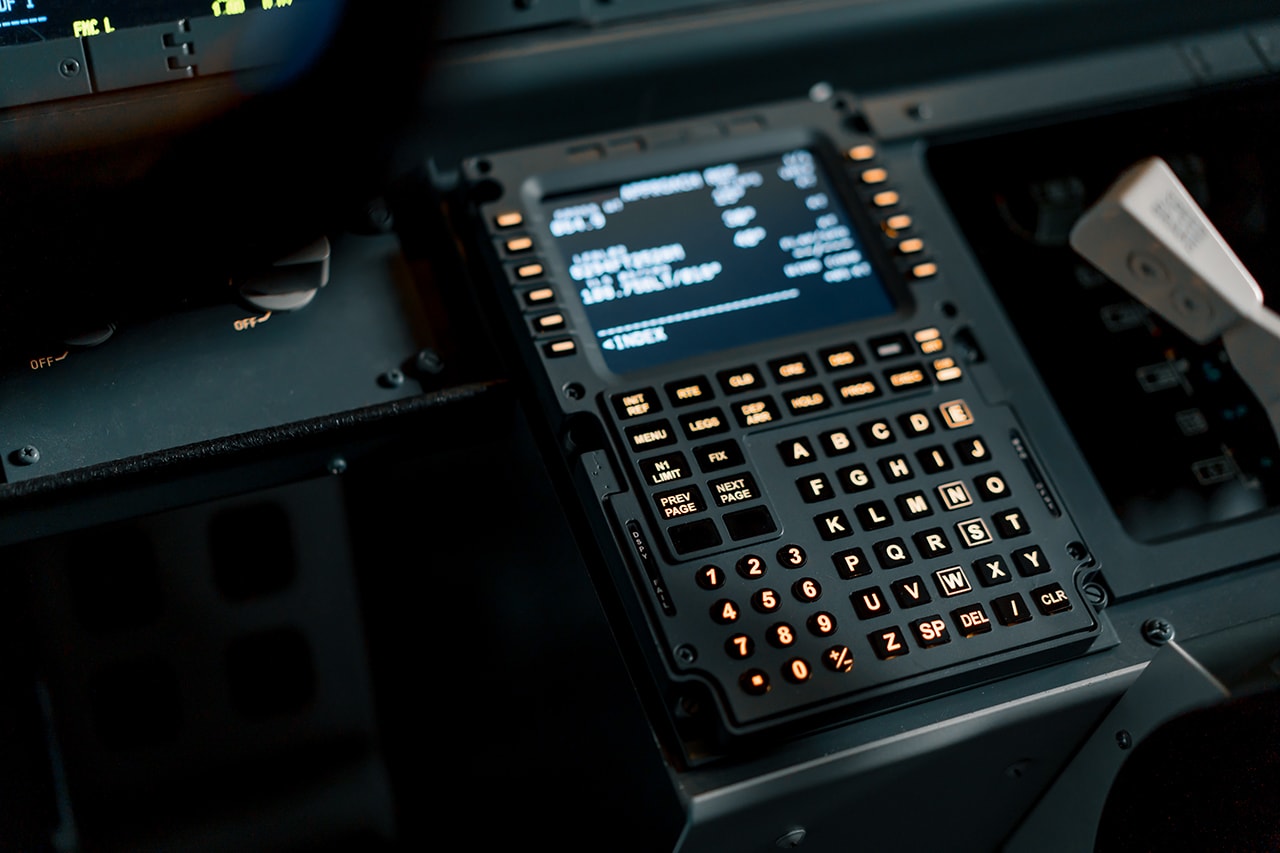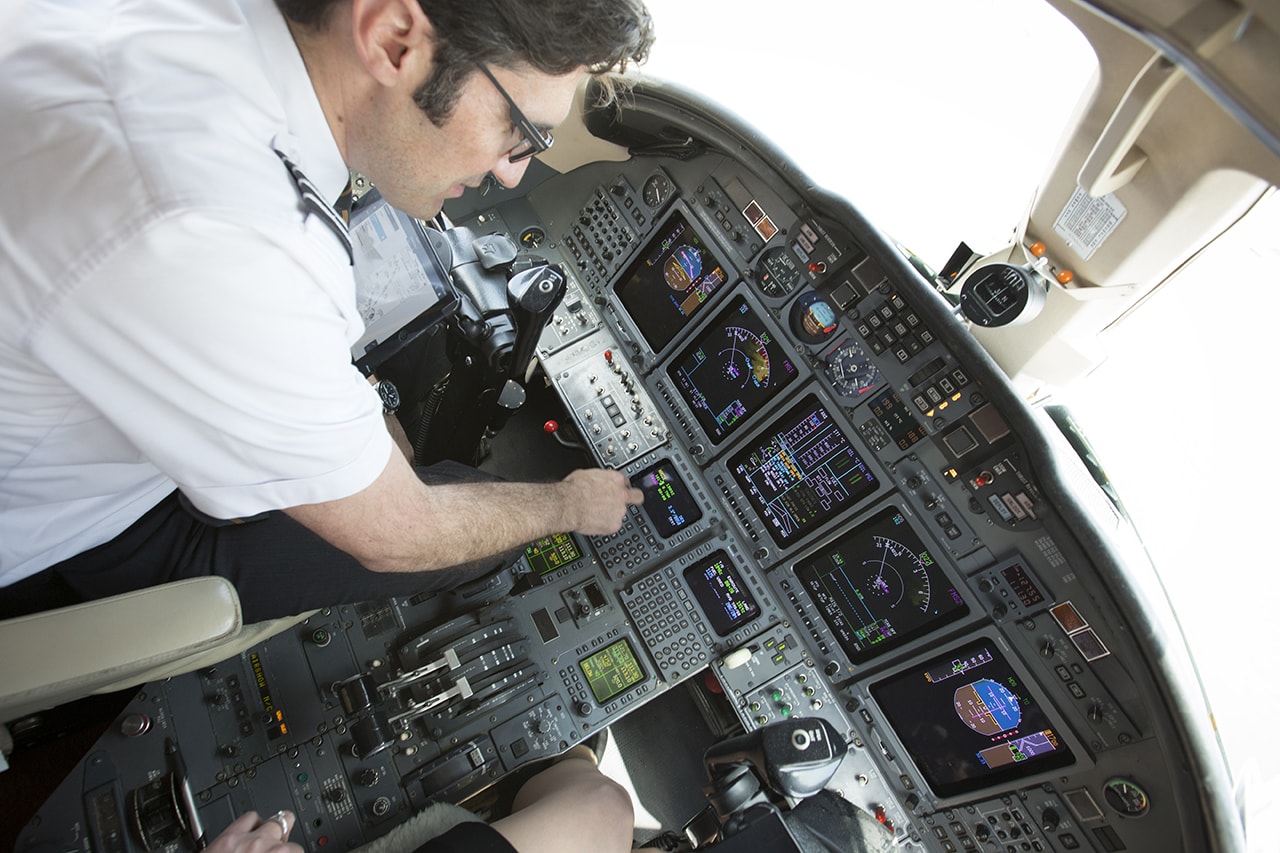Altimeter Setting Explained: A Comprehensive Guide for Pilots
Sep 20, 2024
Altimeter settings are key to safe and accurate flying. In this guide we’ll explain what altimeter settings are, why they matter and how to use them. Then we’ll break down the components of altimeter settings so you can fly with confidence. Altimeter diagram visuals can also help clarify how these settings work. Let’s get started!
What is Altimeter Setting?
Altimeter setting is the process of setting the aircraft altimeter to show the correct height above sea level. This is important so pilots have accurate altitude information for safe flying.
It’s based on standard conditions, 59°F (15°C) at sea level. This way altitude readings are the same for all conditions and flight levels and the aircraft stays safe from the ground.
Pilots get the altimeter setting in units of barometric pressure, in inches of mercury (inHg) or hectopascals (hPa). The standard barometric pressure used worldwide is 29.92 inHg or 1013 hPa so we have a common reference point for altimeter adjustments.
Digging Deeper into Altimeter Settings
To understand why the altimeter setting is important, imagine you’re on a cross-country flight. Accurate altimeter settings ensure that the indicated altitude, which is the altitude shown on the altimeter, is correct. Each place you fly over has different atmospheric pressure due to weather conditions. If you kept your altimeter set to one value for the whole flight it wouldn’t account for these changes and your altitude readings would be inaccurate. You could end up too close to other aircraft following different routes or altitudes. Accurate altimeter settings mean everyone on the same flight level is at exactly the same altitude, no overlaps and this helps maintain safe vertical separation between aircraft.
When you’re preparing for a flight, you’ll get the current altimeter setting from the air traffic control tower (ATC) or automatic terminal information service (ATIS). For example, if ATC says “Altimeter 30.15” you would dial 30.15 into your altimeter. This is the local atmospheric pressure corrected to sea level.
Why 29.92 inHg or 1013 hPa in Barometric Pressure?
The 29.92 inHg or 1013 hPa is called the “standard atmosphere” setting. This is based on an average sea level pressure of 29.92 inches of mercury or 1013 hectopascals during stable weather. Using a standard atmosphere setting is important when flying above the “transition altitude” which is around 18,000 feet in the US where all aircraft set their altimeter to 29.92 inHg or 1013 hPa.
This standardization allows for uniform navigation and ensures aircraft separated accurately, which is crucial for safe and efficient air traffic management.
Altimeter settings are a basic pilot skill. It’s more than just turning a knob; it’s for everyone’s safety. Next time you fly, remember how important this little adjustment is to your overall flight level as it helps maintain proper separation from other aircraft and ensures accurate altitude readings for safer navigation.
Historical Development of Altimeter Settings
The concept of altimeter settings has come a long way since the early 20th century. Initially, altimeters were simple aneroid barometers that measured air pressure and converted it to altitude. However, these early devices were often inaccurate due to fluctuations in atmospheric pressure.
The 1920s marked a significant advancement with the development of the barometric altimeter. This new type of altimeter provided more precise altitude readings by using a more accurate method of measuring air pressure. The barometric altimeter quickly became the standard in aviation, offering pilots a reliable tool for altitude measurement.
In the 1950s, the introduction of the radar altimeter further revolutionized aviation. Unlike barometric altimeters, radar altimeters use radio waves to measure the distance between the aircraft and the ground, providing highly accurate altitude readings. This technology was particularly useful for low-altitude flights and landing approaches.
Today, modern altimeters often combine barometric and radar technologies to deliver even more accurate altitude information. The advent of GPS technology has also played a crucial role, enabling the creation of altimeter systems that use satellite signals for precise altitude determination. These advancements have significantly improved the safety and reliability of altitude measurements in aviation.
How Altimeter Setting Works

The altimeter measures pressure altitude, which is the height above sea level based on standard conditions.
To be accurate, pilots set the altimeter to a reference point called a datum. This is done by adjusting the sub-scale on the altimeter.
Real world weather, high- or low-pressure systems, are factored into the altimeter setting to give you more accurate altitude.
The altimeter setting also corrects for static pressure, installation of the instrument, and any potential errors or discrepancies that might arise from changes in atmospheric conditions or instrument calibration.
By making these adjustments, pilots can trust that their altitude readings are reliable and accurate, promoting safer flight operations.
Factors Affecting Altimeter Readings
Temperature affects altimeter readings. Warm air makes the altimeter show a higher altitude than actual and cold air makes it show a lower altitude. How do Variations in Temperature Affect the Altimeter? These changes in temperature can cause significant altitude discrepancies, requiring pilots to make constant adjustments.
Another factor is density altitude. This is affected by both air temperature and humidity. Density altitude is different from pressure altitude you are used to. It accounts for, not just pressure, but both air pressure and temperature.
Air pressure changes as you go up or down. So, pilots must constantly adjust the altimeter setting to match the current air pressure to get an accurate altitude reading.
The surrounding terrain also affects the local altimeter setting. Mountains, valleys and other geographical features will affect local air pressure and consequently, how you set your altimeter.
Weather conditions also play a part. High- and low-pressure systems and other weather variations should be considered when adjusting the altimeter setting so pilots have the most reliable altitude information.
Altimeter Setting Procedures

The altimeter setting is key to getting accurate altitudes and is set to the local pressure setting. This local setting is the height above the reference elevation being used so you can navigate safely.
Above the transition altitude of 18,000 MSL, you switch to a standard pressure setting of 29.92 inHg or 1013 hPa. This standardization ensures altitudes are the same across all flight levels.
Extreme cold or big changes in air pressure require an altimeter setting adjustment. Without an adjustment the altimeter won’t give you an accurate altitude, which could lead to incorrect altitude readings, increasing the risk of altitude conflicts or safety issues.
Pilots must be aware and check their altimeter settings regularly. Continuous monitoring will account for any changes in air pressure throughout the flight.
Overall altimeter setting procedures are key. They give you the most accurate altitude information you need for safe and efficient navigation.
For new pilots it’s good to know that your altimeter should be set to the local pressure setting when flying at lower altitudes.
This local setting which is the height above sea level, or the airport elevation will help you know your true altitude and fly precisely according to your planned flight path.
When you go above the transition altitude which is 18,000 feet in the US you should switch to a standard pressure setting of 29.92 inHg or 1013 hPa.
This standardization across all aircraft will give all pilots the same altitude reading.
Also remember to adjust your altimeter settings for extreme cold or big changes in air pressure to avoid wrong altitude readings.
Check and update your altimeter regularly for highest safety standards during your flight.

Common Errors and Safety Considerations
Setting your altimeter correctly is critical because incorrect settings can give you wrong altitudes. That can be dangerous and lead to controlled flight into terrain (CFIT).
Several things can cause altimeter errors. These are incorrect altimeter settings, instrument errors and static pressure issues.
Know the minimum safe altitude for your routes which depends on where you are flying and can be found on the appropriate aeronautical chart or departure/approach plate for that area.
Always use the altimeter setting along with other navigation aids to ensure you are flying safely. That will give you an accurate altitude reading and help you maintain proper vertical separation from other aircraft.
By regularly checking and adjusting altimeter settings, pilots can prevent errors and navigate safely, keeping both themselves and their passengers secure.
Case Studies on Altimeter Setting Errors
Altimeter setting errors can have dire consequences, as illustrated by several notable accidents in aviation history. These case studies underscore the critical importance of accurate altimeter settings:
-
1978 Boeing 737 Crash in Colombia: A tragic accident occurred when a Boeing 737 crashed into a mountain due to an altimeter setting error. The aircraft was supposed to be flying at 12,000 feet, but the altimeter was incorrectly set to 10,000 feet, resulting in a 2,000-foot discrepancy. This error led to the aircraft colliding with the terrain.
-
1995 Boeing 757 Crash in Colombia: Another devastating incident involved a Boeing 757 that crashed into a mountain. The altimeter was set to 8,000 feet instead of the intended 10,000 feet, causing a 2,000-foot error. This mistake proved fatal as the aircraft descended into the mountainous terrain.
-
2010 Boeing 737 Crash in India: In this case, a Boeing 737 crashed into a mountain due to an altimeter setting error. The aircraft was flying at an altitude of 8,000 feet, but the altimeter was set to 6,000 feet, resulting in a 2,000-foot error. This error led to the aircraft’s collision with the mountain.
These case studies highlight the severe consequences of incorrect altimeter settings and the necessity for pilots to be vigilant in ensuring their altimeters are accurately set.
Altimeter Setting and Aircraft Altimeter Performance
The altimeter setting is key to an aircraft’s climb and descent. Getting it right means smooth and efficient changes of altitude and safety of flight.
When planning your route and cruising altitude the altimeter setting must be taken into account. Get it right and you’ll avoid problems and the route you’ve chosen will be the best one.
Accurate altimeter settings can make a big difference to fuel efficiency. By tweaking these you can optimize fuel consumption and extend the range.
Flying in mountains or high country requires extra attention to the altimeter setting. These areas are tricky and accurate altitude is vital for navigation and terrain avoidance.
In short, getting the altimeter setting right is the key to best aircraft performance, safety and efficiency
Best Practices for Altimeter Setting

When below transitions altitude, always set your altimeter to the local altimeter setting. This will give you accurate altitudes in the lower air.
Above transition altitude, set to standard pressure of 29.92 inHg or 1013 hPa. This is for consistency in high altitude flying.
Check altimeter setting frequently throughout your flight. Frequent checks will keep you accurate and safe.
Use multiple navigation aids to cross check your altitude and position. This is a safety necessity to confirm your situational awareness and avoid potential altitude conflicts.
By following these best practices, you can maintain accurate altitude readings and ensure a safe, efficient, and smooth flight experience.
Factors Influencing Accurate Altimeter Settings
As a pilot you need to understand the factors that affect altimeter accuracy. Temperature affects altimeter readings. When the temperature is not standard the readings will be higher or lower than the actual altitude.
Air pressure changes are another big one. Changes in atmospheric pressure will give you incorrect altitude readings as the altimeter uses pressure to determine altitude. You need to constantly adjust the altimeter setting.
Humidity also affects altimeter accuracy. High humidity will give you a higher altitude than actual, low humidity will give you a lower altitude. Pilots need to be aware of the humidity to get correct altitude readings.
Knowing and accounting for these is key. Pilots can increase flight safety and efficiency by understanding how temperature, air pressure and humidity affect altimeter readings and adjust accordingly.
In short, pilots need to be aware and adjust their altimeters for temperature, air pressure and humidity changes to get accurate altitude readings
Benefits of Correct Altimeter Settings
Having the right altimeter settings makes a big difference in aircraft performance. When you have accurate altitudes you can fly better and overall flying is more fun.
Best fuel efficiency is another big benefit. With the right altitude you can fly more efficiently, burn less fuel and save cost and the environment.
Safety is greatly improved with right altimeter settings. Accurate altitudes prevent controlled flight into terrain (CFIT) and you can avoid obstacles
Proper separation from other aircraft is key to flying smooth. Right altimeter settings keep the distance between airplanes and prevents collisions.
In the end, accurate alt settings mean smoother fli ghts. Pilots feel more comfortable, and passengers get a safer, better journey.

Technological Advances in Altimeter Systems
Modern altimeter systems have seen remarkable technological advancements, enhancing their accuracy and reliability. Here are some key developments:
-
GPS Technology: The integration of GPS technology has revolutionized altimeter systems. GPS altimeters use satellite signals to determine the aircraft’s altitude with exceptional precision. This technology provides highly accurate altitude readings, significantly improving flight safety.
-
Radar Technology: Radar altimeters have been a game-changer in aviation. By using radio waves to measure the distance between the aircraft and the ground, radar altimeters offer precise altitude information, especially useful during low-altitude flights and landing approaches.
-
Barometric Technology: Modern barometric altimeters have advanced sensors and algorithms that provide highly accurate readings of air pressure, which are then converted to altitude. These improvements have made barometric altimeters more reliable than ever.
-
Digital Technology: The shift to digital altimeter systems has brought about significant improvements in accuracy and reliability. Digital altimeters use sophisticated algorithms and sensors to deliver precise altitude readings, reducing the risk of errors.
These technological advancements have greatly enhanced the performance of altimeter systems, making aviation safer and more efficient.
Regulatory Standards for Altimeter Settings
Regulatory standards for altimeter settings are established by aviation authorities worldwide to ensure accuracy and safety. Here are some key regulatory standards:
-
ICAO Standards: The International Civil Aviation Organization (ICAO) sets global standards for altimeter settings. These standards include the use of standard barometric pressure and the reporting of altimeter settings in inches of mercury (inHg). ICAO’s guidelines ensure uniformity and accuracy in altimeter settings across different regions.
-
FAA Standards: In the United States, the Federal Aviation Administration (FAA) sets the standards for altimeter settings. The FAA mandates the use of standard barometric pressure and the reporting of altimeter settings in inches of mercury (inHg). These regulations help maintain consistency and safety in U.S. airspace.
-
EASA Standards: The European Aviation Safety Agency (EASA) establishes standards for altimeter settings in Europe. EASA’s regulations also require the use of standard barometric pressure and the reporting of altimeter settings in inches of mercury (inHg). These standards ensure that altimeter settings are accurate and reliable across European airspace.
These regulatory standards play a crucial role in maintaining the accuracy and reliability of altimeter settings, thereby enhancing flight safety and efficiency.
Conclusion
Altimeter settings are key to safe flying. When you have the right settings, you get accurate altitude which is critical to flying and avoiding hazards.
Aircraft performance is affected by correct altimeter settings. Accurate altitude gives you fuel efficiency and cost savings and environmental sustainability. It also means the aircraft can maintain the right altitude and overall performance.
Safety is significantly improved with precise altimeter settings. Pilots are better equipped to avoid controlled flight into terrain (CFIT) and can maintain proper separation from other aircraft, preventing collisions and enhancing overall flight safety.
By following best practices for altimeter settings, pilots can guarantee accurate altitude information, leading to smoother, more reliable, and safer flight experiences for both crew and passengers.
